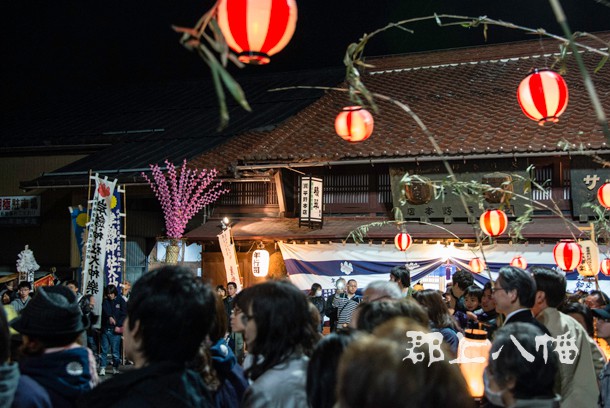
Festivals are the lifeblood of every Japanese town and village, and many of the festivals and events in Gujo Hachiman have long histories; some date back over 450 years.
Residents and visitors alike look forward with anticipation and excitement to these annual rituals that welcome a season, give thanks for the harvest, or are simply special days of the year.
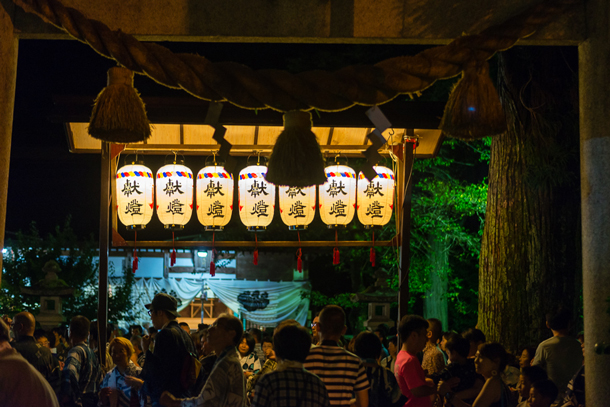
Come and experience traditions and celebrations in a way that is truly up close, accessible to anyone, and simply not possible in larger towns and cities.
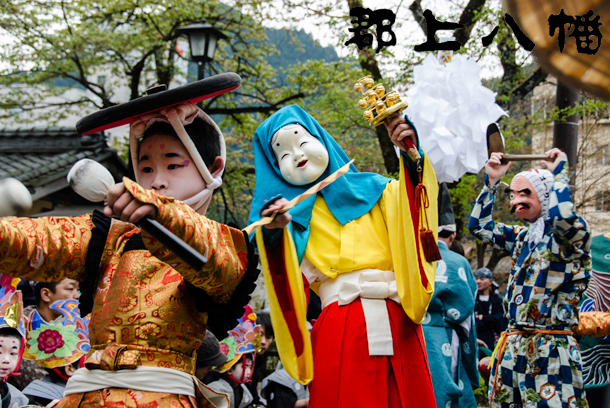
As the last of the cherry blossom petals fall gently to the ground, the town comes alive for two days of colourful parades and celebration to welcome spring. This is the week-end when three different parades, each mounted by a different shrine, simultaneously wind their ways through the town's old narrow streets in the historic centre.
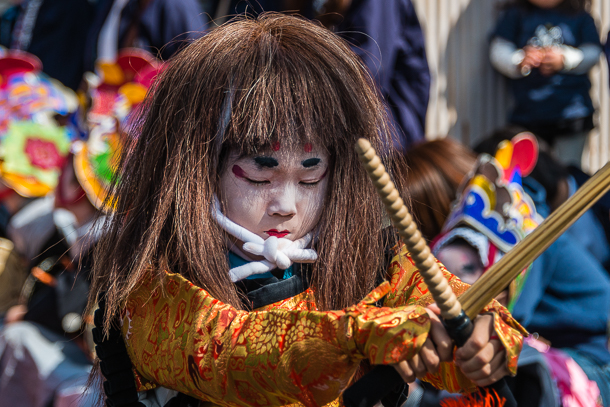
While the exact origin of these parades and their connection to spring has been lost to history, these three parades have formed the essence of the town's Spring Festival since the 1600's and are designated by the Gifu Prefecture government as important intangible folk cultural assets.
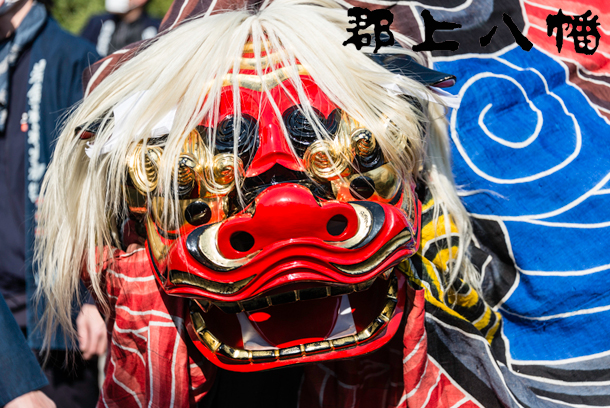
The colourful parades begin early Saturday and Sunday morning and continue through the day, until the evening on both days. Each parade is led by its respective shrine's priest, and is made up of children dressed in colourful traditional costumes who beat drums while trying to tame a kagura "lion", together with various traditionally dressed characters.
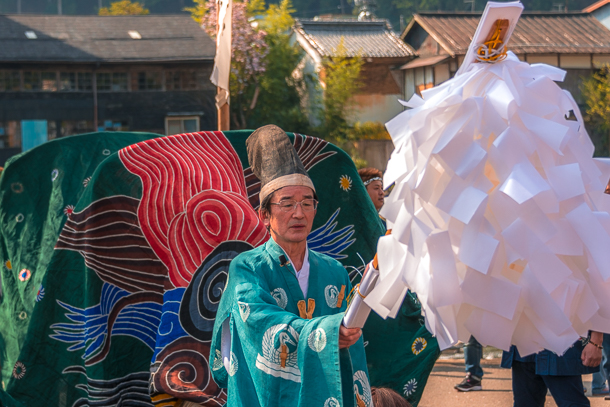
As the parades wind their way through the town, young girls accompanying the parade deliver blessings and symbols of good luck from the shrine to homes and businesses along the parade route.
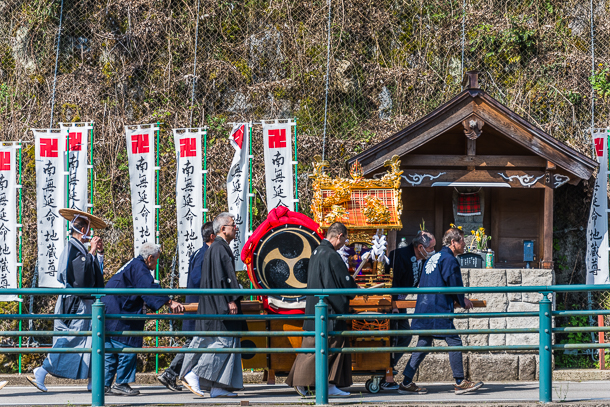
The festival culminates on Sunday evening when two of the three parades meet at the Miyagase bridge in the heart of the town. This is when the children who have been performing in the parades are hoisted onto the shoulders of the adults, and are twirled around in a symbolic crossing of the Yoshida River, while the two kagura "lions" dance and interact with the crowd, and the characters in the parade entertain onlookers.
Of course over the two days you will also find street vendors who have set up their stalls just next to Jokamachi plaza selling tako yaki, ika yaki, and all the assorted street foods found at every Japanese festival, together with traditional children's games and assorted festival related gifts for sale.
Gujo Odori is Gujo Hachiman's most important festival, and runs from mid-July until early September (July 9th to September 3rd 2016). Each year over 300,000 visitors take part in this annual event designated a Significant Intangible Cultural Folk Asset by the Japanese government. Planning your accommodation well ahead is the secret to participating in this unique cultural event.
You can learn more about this unique bon dance festival on our Gujo Odori Dance Festival page, and can find the festival dance schedule, dance times and locations here.
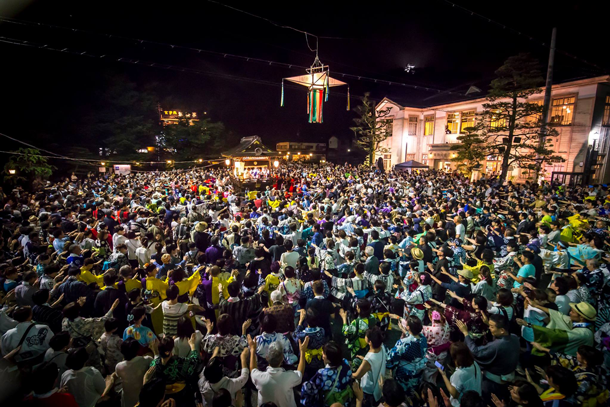
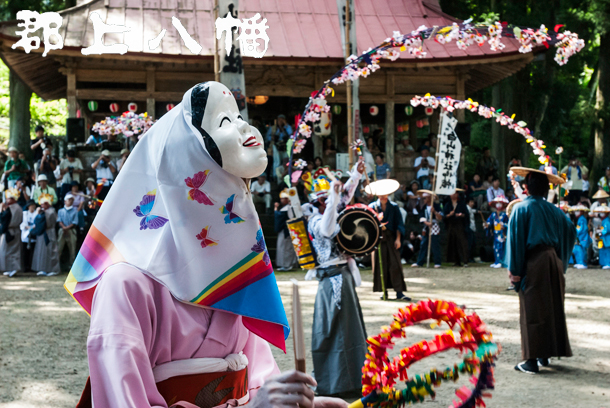
A dancer performing Kake Odori.
Held annually at the Hakusan Shrine this colourful autumn festival celebrates the annual rice harvest. Dancers wearing tall bamboo branches decorated with colourful flowers attached to their backs perform various acrobatic movements that show off their coordination, fitness, and strength for the entertainment of onlookers, while over 120 musicians and singers also take part.
Driving Instructions from Gujo Hachiman to the Hakusan Shrine
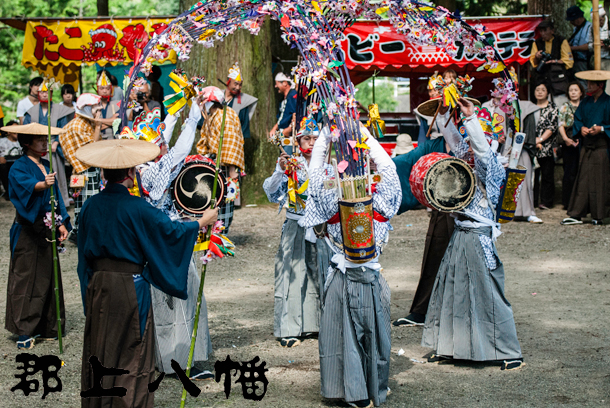
Dancers performing Kake Odori.
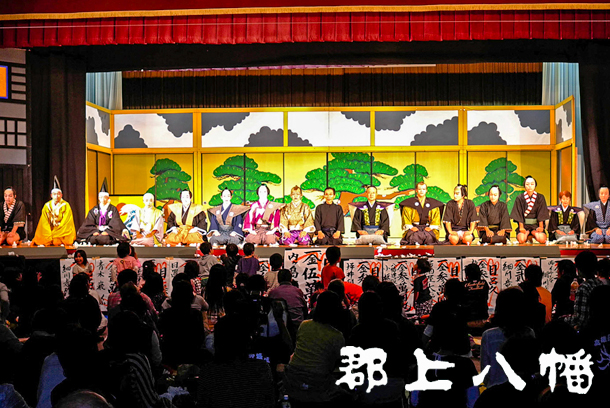
The Takao Shrine, as one of several autumn celebrations of the annual rice harvest, mounts a much anticipated annual amateur kabuki performance. This is when locals and visitors alike can relax and be entertained for an evening of sophisticated, but light-hearted fun.
The annual performance begins at 6 pm and continues until midnight. The play changes each year, and represents a full year of rehearsal by dedicated amateur kabuki actors. As the evening's performance unfolds on the stage, members of the audience enjoy the bounty of the harvest and snack on specially prepared bento meals, drink sake, and enjoy the luxury of an evening of traditional entertainment.
This annual performance is made possible thanks to the local Kabuki Preservation Society, local amateur kabuki enthusiasts, and a unique kabuki program run by the Gujo Hachiman elementary school.
As such, the performance is part celebration, and part exercise in preserving this unique Japanese performance art so that local youth cultivate an interest in kabuki, and continue this remarkable tradition.
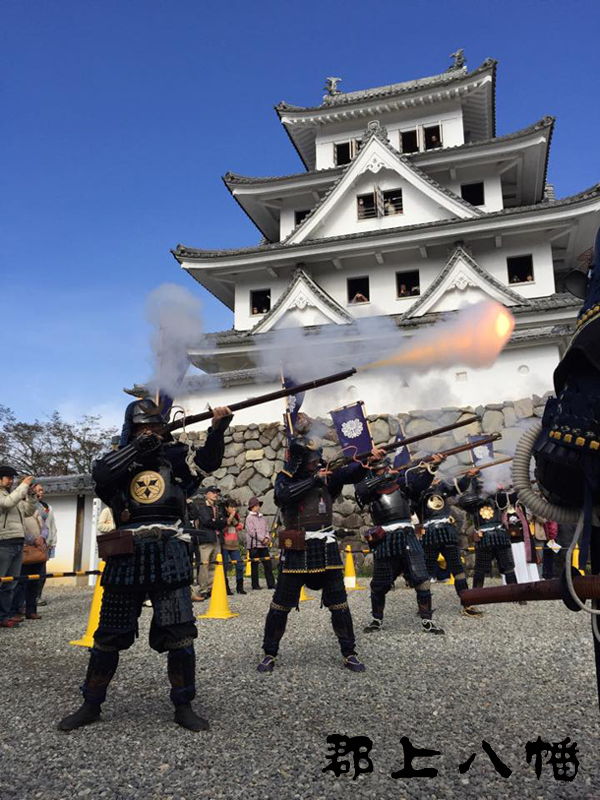
Most castles in Japan are known for their early spring displays of cherry blossoms, however Gujo Hachiman's castle is better known for its spectacular autumn colours thanks to the many Japanese maples that surround the castle on all sides.
At their peak, the fiery red leaved trees resemble flames engulfing the castle, especially when they are lit up at night when the colours reach their peak in mid November. The castle is especially photogenic at this time of year.
The Gujo Hachiman momiji festival begins the end of October and continues until mid November, with the autumn colours typically reaching their peak around the 10th - 12th of November.
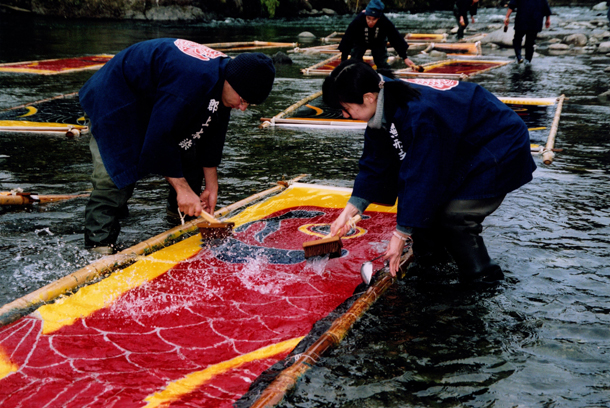
Held annually on the coldest day of the year (on approximately January 20th.) and again in early February, this is the day that the colourfully dyed koinobori wind socks are fixed by soaking overnight in the cold fast running water of the Yoshida River. This event is a favourite of both photographers and indigo collectors.
Visit us in person:
Kinenkan Tourism Centre
501-4222
520-1, Shimadani,
Hachiman Cho,
Gujo Shi, Gifu ken,
Japan
Hours:
9:00 am - 5:00 pm daily
9:00 am - 6:00 pm during Gujo Odori season
Phone: 0575 67-0002